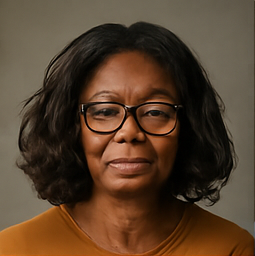Harvard to Return Historic Photographs of Enslaved Ancestors to South Carolina Museum










2025-05-28T15:11:00Z
BOSTON (AP) — In a significant and historic decision, Harvard University has agreed to relinquish ownership of a collection of photographs believed to be the earliest images ever taken of enslaved individuals. These photographs, which are over 175 years old, will be transferred to the International African American Museum in South Carolina. This transfer comes as part of a settlement with Tamara Lanier, a descendant of one of the individuals depicted in the images.
The photographs feature Lanier's great-great-great-grandfather, known to her as “Papa Renty,” along with his daughter Delia. These images were captured in 1850, during a time when Renty and Delia were enslaved. Following this announcement, Lanier's attorney, Joshua Koskoff, spoke to the Associated Press, noting the significance of this resolution as an “unprecedented” victory for the descendants of enslaved individuals across the United States. He praised Lanier for her relentless pursuit of justice over the years.
“I think it’s one of one in American history,” Koskoff said. “It’s remarkable to have a case spanning 175 years and to gain control over images of enslaved people—something that has never happened before.” Harvard University, in its response to the settlement, expressed its eagerness to see these “Zealy Daguerreotypes” placed in a context that enables wider access for the public. The university acknowledged Ms. Lanier's role in igniting crucial dialogues surrounding the images.
“While we are grateful to Ms. Lanier for sparking important conversations about these images, this was a complex situation, particularly since Harvard has not confirmed that Ms. Lanier was related to the individuals in the daguerreotypes,” the university stated.
This long-standing legal battle began in 2019 when Lanier filed a lawsuit against Harvard, claiming “wrongful seizure, possession and expropriation” of the images that included Renty, Delia, and five other enslaved people. Her suit highlighted Harvard’s exploitation of Renty’s likeness at a conference in 2017 and alleged that the university had profited from the images by charging substantial licensing fees for their reproduction.
The daguerreotypes were originally commissioned by Louis Agassiz, a Harvard biologist whose controversial theories on racial differences were utilized to rationalize slavery in the United States. The lawsuit claims that Agassiz discovered Renty and Delia on plantations while seeking “racially pure” subjects for his research. Disturbingly, the images depict both Renty and Delia in a state of undress, posed in ways that stripped them of their dignity.
“To Agassiz, Renty and Delia were nothing more than research specimens,” the lawsuit asserts. “The violence of compelling them to participate in a degrading exercise designed to prove their own subhuman status would not have occurred to him, let alone mattered.”
In a landmark ruling in 2022, the Massachusetts Supreme Court sided with Lanier, reaffirming her claims against Harvard after an earlier lower court had dismissed her case. The state's highest court acknowledged Harvard’s complicity in the “horrific actions” surrounding the creation of the daguerreotypes, asserting that the university's current responsibilities cannot be separated from its historical wrongs.
Tonya M. Matthews, CEO of the International African American Museum, hailed the return of these images as a monumental achievement, stating it was “175 years in the making.” She praised Lanier for her “bravery, tenacity, and grace,” commending her efforts to restore these vital pieces of her family's history to South Carolina.
Matthews emphasized the museum’s commitment to collaborating with Lanier to ensure that the story of the images is told accurately and respectfully, rather than merely transferring them from one institution to another without context. “It’s not an improvement just to move them from one closet in a mighty institution to another,” she said. “The real importance lies in allowing these images to breathe, to tell their full story.”
Koskoff also underscored the significance of allowing Lanier to narrate her family’s history in a setting that respects her voice. “Everybody has the right to tell the story of their own families,” he stated. “That’s the least, most basic right we might have.”
While the lawsuit sought recognition of Harvard’s connection to slavery, an acknowledgment that remains elusive, the settlement does include an undisclosed financial agreement. Koskoff noted that despite the resolution, Harvard has yet to publicly affirm Lanier’s ancestral ties to Renty and Delia or confront its historical role in perpetuating slavery.
“That remains unanswered by Harvard,” he concluded. However, he expressed confidence that the settlement itself speaks volumes. “In the end, the truth will find you — you can only hide from it for so long.” He poignantly remarked, “Yes, history is written by the winners, but over time, sometimes those winners look like losers.”
 Angela Thompson
Angela Thompson
Source of the news: AP News